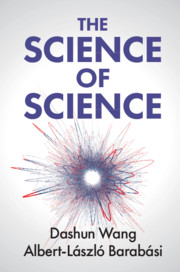Refine search
Actions for selected content:
48572 results in Computer Science
Effect of using green fluorescent protein double-stranded RNA as non-target negative control in Nasonia vitripennis RNA interference assays
-
- Journal:
- Experimental Results / Volume 2 / 2021
- Published online by Cambridge University Press:
- 10 February 2021, e11
-
- Article
-
- You have access
- Open access
- HTML
- Export citation
ROB volume 39 issue 3 Cover and Back matter
-
- Article
-
- You have access
- Export citation
Preserving cardinals and weak forms of Zorn’s lemma in realizability models
-
- Journal:
- Mathematical Structures in Computer Science / Volume 30 / Issue 9 / October 2020
- Published online by Cambridge University Press:
- 10 February 2021, pp. 976-996
-
- Article
- Export citation
Thirty years of design for sustainability: an evolution of research, policy and practice
- Part of
-
- Journal:
- Design Science / Volume 7 / 2021
- Published online by Cambridge University Press:
- 09 February 2021, e2
-
- Article
-
- You have access
- Open access
- HTML
- Export citation
Cognitive differences among first-year and senior engineering students when generating design solutions with and without additional dimensions of sustainability
- Part of
-
- Journal:
- Design Science / Volume 7 / 2021
- Published online by Cambridge University Press:
- 08 February 2021, e1
-
- Article
-
- You have access
- Open access
- HTML
- Export citation

The Science of Science
-
- Published online:
- 07 February 2021
- Print publication:
- 25 March 2021
FURTHER RESULTS ON STOCHASTIC ORDERINGS AND AGING CLASSES IN SYSTEMS WITH AGE REPLACEMENT
-
- Journal:
- Probability in the Engineering and Informational Sciences / Volume 36 / Issue 3 / July 2022
- Published online by Cambridge University Press:
- 05 February 2021, pp. 660-689
-
- Article
- Export citation
Fostering trustworthy data sharing: Establishing data foundations in practice
-
- Journal:
- Data & Policy / Volume 3 / 2021
- Published online by Cambridge University Press:
- 05 February 2021, e4
-
- Article
-
- You have access
- Open access
- HTML
- Export citation
Comprehensive Review on Reaching and Grasping of Objects in Robotics
-
- Article
-
- You have access
- Export citation
Index
-
- Book:
- Model Checking Quantum Systems
- Published online:
- 14 January 2021
- Print publication:
- 04 February 2021, pp 208-210
-
- Chapter
- Export citation
4 - Model Checking Quantum Automata
-
- Book:
- Model Checking Quantum Systems
- Published online:
- 14 January 2021
- Print publication:
- 04 February 2021, pp 50-86
-
- Chapter
- Export citation
Frontmatter
-
- Book:
- Model Checking Quantum Systems
- Published online:
- 14 January 2021
- Print publication:
- 04 February 2021, pp i-iv
-
- Chapter
- Export citation
References
-
- Book:
- Model Checking Quantum Systems
- Published online:
- 14 January 2021
- Print publication:
- 04 February 2021, pp 201-207
-
- Chapter
- Export citation
2 - Basics of Model Checking
-
- Book:
- Model Checking Quantum Systems
- Published online:
- 14 January 2021
- Print publication:
- 04 February 2021, pp 6-30
-
- Chapter
- Export citation
5 - Model Checking Quantum Markov Chains
-
- Book:
- Model Checking Quantum Systems
- Published online:
- 14 January 2021
- Print publication:
- 04 February 2021, pp 87-137
-
- Chapter
- Export citation
3 - Basics of Quantum Theory
-
- Book:
- Model Checking Quantum Systems
- Published online:
- 14 January 2021
- Print publication:
- 04 February 2021, pp 31-49
-
- Chapter
- Export citation
Contents
-
- Book:
- Model Checking Quantum Systems
- Published online:
- 14 January 2021
- Print publication:
- 04 February 2021, pp v-viii
-
- Chapter
- Export citation
Appendix 1 - Proofs of Technical Lemmas in Chapter 4
-
- Book:
- Model Checking Quantum Systems
- Published online:
- 14 January 2021
- Print publication:
- 04 February 2021, pp 181-189
-
- Chapter
- Export citation
